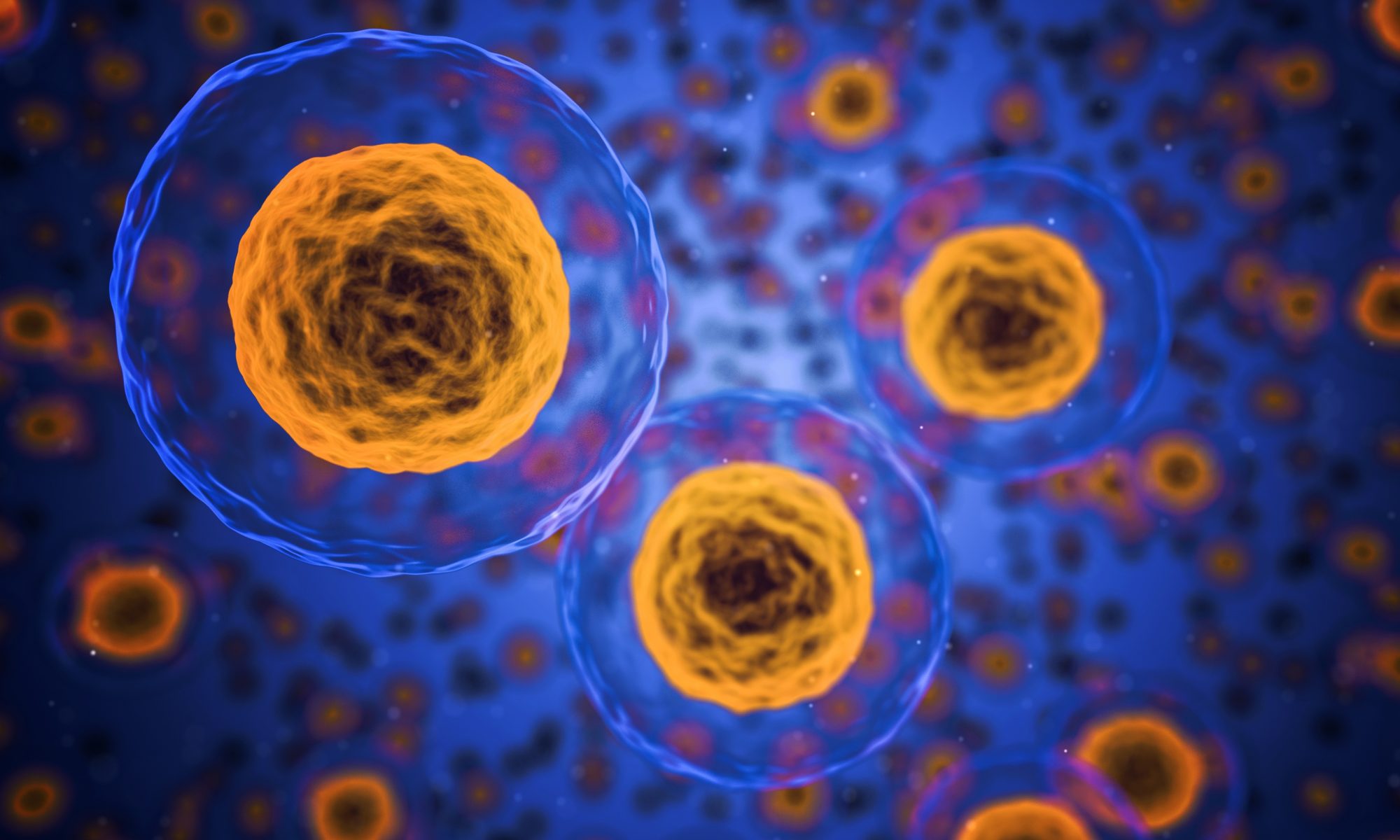All cells of our body contain the script, the genetic code, for how our body is built up. This is written in our DNA (deoxyribonucleic acid). DNA consists of long strands of nucleotides (the building blocks of DNA) forming double helices. Each of our cells contain two meters of DNA, tightly wrapped and distributed over chromosomes. These chromosomes come in pairs: each cell contains 23 pairs of chromosomes (one set inherited from your mother and the other one from your father). Chromosomes contain the codes for the proteins that form our body and exert functions in our body. These codes are called genes. It depends on the specific cell which of these genes are expressed, i.e. which proteins are produced. Proteins are not directly translated from the genes (DNA). First the genes are transiently transcribed into a messenger called mRNA (ribonucleic acid). In a gene the genetic code is dispersed over coding parts (exons) and non-coding parts (introns). At the RNA-step these non-coding parts are removed (during a process called splicing), after which only the coding exons are joined and can be translated into protein. When there is a mistake in a gene, this can result in lack of a certain protein, or the production of a toxic protein. Often these mistakes (mutations) result in inherited diseases.
Antisense oligonucleotide (AON) therapy is a form of therapy that aims to correct the genetic defect at the RNA level. Since AONs act on the RNA level, the effect is, in contrast to gene therapy, temporary and retreatment is required.AONs are short strands of DNA building blocks (typically 15‑30) that can bind specifically to gene transcripts. Because DNA building blocks are very sensitive to degradation, they have been chemical modified to make them more resistant. Many different chemical modifications of AONs exists, each having its own properties. Some of these modifications increase the binding to the target, others improve the stability of the AONs or lead to better delivery to the target tissue. Which type is most suitable depends on the purpose and the targeted tissue.
AONs can be used for several purposes. Firstly, to decrease the levels of a toxic protein or a key protein involved in disease pathology (knockdown). Here the AONs activate an enzyme (RNase H) or a complex (RISC) that degrades mRNA transcripts and prevents the production of a specific protein. Secondly, AONs can be used to restore or modulate the expression of a missing protein by modulating the splicing process.
The main safety aspects of AONs are related to their specificity and the chemical modification used. AONs have to be specific only to their target transcript to prevent unwanted binding to other parts of the RNA transcripts, which may cause (harmful) side effects. Furthermore, in the case of protein knockdown too much knockdown or knockdown outside of the desired tissue can sometimes lead to side effects as well.
Currently ten AONs have been approved by either the FDA (USA), EMA (Europe) or the Japanese Ministry of Health, Labour and Welfare (JMHLW). At the moment many other AONs are in different stages of development for a wide range of genetic and acquired diseases.
| Mechanism of action | Compound | Disease | Approval |
| Prevention of protein production | Fomovirsen | CMV-induced retinitis | FDA (1998) EMA (1999) |
| Activation of Rnase H (breakdown of RNA transcripts) |
Mipomirsen | Familial hypercholesterolemia | FDA (2013) |
| Inotersen | Hereditary transthyretin-mediated amyloidosis | FDA (2018) EMA (2018) |
|
| Volanesorsen | Hypertriglycidemia Familial chylomicronemia syndrome Familial partial lipodystrophy |
EMA (2019) | |
| Activation of RISC (breakdown of RNA transcripts) |
Patisiran | Hereditary transthyretin-mediated amyloidosis | FDA (2018) EMA (2018) |
| Givosiran | Acute hepatic porphyrias | FDA (2019) | |
| Modulation of splicing process | Eteplirsen | Duchenne muscular dystrophy | FDA (2016) |
| Golodirsen | Duchenne muscular dystrophy | FDA (2019) | |
| Viltolarsen | Duchenne muscular dystrophy | JMHLW (2020) | |
| Nusinersen | Spinal muscular atrophy | FDA (2016) EMA (2017) |
